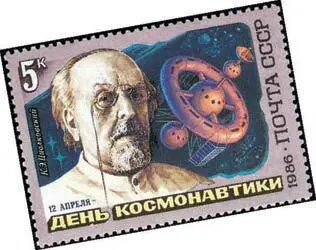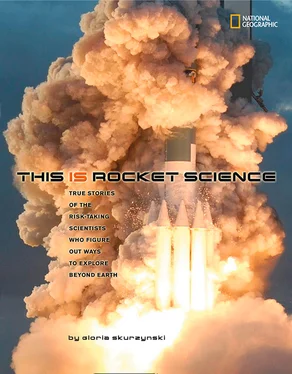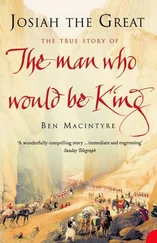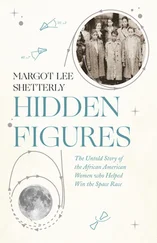CHINESE CHARACTERS FOR “ROCKET” AND “FIRE ARROW”
On Christmas Day 1241 Mongol troops used fire arrows to capture the city of Budapest in Hungary, and in 1258 to capture the city of Baghdad in what’s now Iraq. Soon the Arabs in Baghdad created their own fire arrows and used them against the army of French king Louis IX.
By 1300 these weapons had moved farther into Europe, reaching Italy by 1500. There, the people enjoyed exploding them for the same reason the Chinese had at first: to make fireworks. In the old Italian language rocce was the word for a long, thin tube. As fire arrows advanced into explosive devices using tubes of iron filled with gunpowder, the word “rocce” evolved into the word “rocket.”
AS THE MONGOL CONQUERORS MOVED WEST INTO THE ARAB WORLD, PEOPLE THERE LEARNED TO MAKE THEIR OWN FIRE ARROWS.
Nearly two centuries after the Italians coined the term that became the English word “rocket,” British scientist Sir Isaac Newton formulated his famous laws of gravity and motion, now frequently used to explain how rockets and propulsion work. This statue (left) shows Newton standing above an apple. Tradition says that seeing an apple fall from a tree inspired his thoughts about gravity. Newton also built on the ideas of scientists who had come before him—Copernicus, Galileo, and Kepler—to formulate the three laws of motion. He published them in 1687 in a book titled Philosophiæ Naturalis Principia Mathematica (Mathematical Principles of Natural Philosophy).
WHEN HE SAW AN APPLE FALL FROM A TREE, ISAAC NEWTON BEGAN TO STUDY GRAVITY.
Newton’s first law states, “Every object persists in its state of rest or uniform motion in a straight line unless it is compelled to change that state by forces acting upon it.” In other words, if something isn’t moving, it will stay where it is until something moves it. And if it’s moving, it will keep moving at the same speed and in the same direction unless a force acts upon it to change its speed or direction.
What are the forces in Newton’s first law as it applies to rockets? Gravity is a force. From the first millisecond of launch, Earth’s gravity pulls on the rocket. The force of gravity between two objects depends on the masses of the two objects and the distance between the centers of mass of the two objects. As the distance between two objects gets larger—for example, the distance between Earth and a moving rocket—the gravitational force between them gets smaller.
Thrust is a force caused by hot gases coming out of the rocket that are counteracting the force of gravity and pushing upward against another force: air resistance. These three forces work together, acting on the rocket at launch and during flight.
Newton’s second law says, “Force equals mass multiplied by acceleration.” As one rocket scientist says, “It’s a ridiculously simple and at the same time complex equation.” Mass is the amount of matter in an object. Weight is the gravitational attraction of the mass, and the weight stays constant unless the force of gravity is changing. Acceleration is the rate of change in the velocity (speed) of a moving body—a measure of how fast the object is changing its speed.
Thrust in a rocket depends on the rate at which the mass of the burning fuel inside the rocket is expelled through the nozzle at the end of the rocket and the speed at which it escapes. The force of the extremely hot gases escaping through the nozzle accelerates the rocket. The heavier the rocket, the more thrust/force will be needed to move it. If a rocket weighs a million pounds and only a million pounds of thrust is produced, the rocket won’t move. To launch it off the ground requires a thrust greater than a million pounds so it can overcome gravity and air resistance. To increase the thrust level requires burning more fuel, using a higher-energy fuel, or both.
Newton’s third law reads, “For every action there is an equal and opposite reaction.” With rockets, the action is the expelling of high-speed exhaust through the back end. The reaction is the movement of the rocket in the opposite direction. The same thing happens when you blow up a balloon and let it go. The air rushing out of the open end shoots the balloon away from you.
After Newton published his laws of motion, people began to think of rocketry as a science, which of course it had been all along. In the 1700s Germans and Russians experimented with rockets so powerful that, when lit and fired, their blasts blew holes in the ground. Gradually, as they understood and applied Newton’s laws of motion, scientists began to understand the forces in rocketry—how to control them and what to expect.

DURING THE WAR OF 1812, AS BRITISH WARSHIPS FIRED ROCKETS ON FORT MCHENRY IN MARYLAND FRANCIS SCOTT KEY WROTE ABOUT “THE ROCKETS’ RED GLARE.”
Just before the beginning of the 20th century, black
H. G. WELLS’S NOVEL THE WAR OF THE WORLDS INSPIRED YOUNG FUTURE SCIENTISTS TO DREAM OF SPACE TRAVEL.
2
THE FATHERS OF MODERN ROCKETRY
Born in 1857, Konstantin Tsiolkovsky was one of 18 children of a Polish patriot who’d been deported to Russia. When Konstantin was ten years old, he became deaf from scarlet fever. This kept him out of school, but he taught himself by studying as many books as he could borrow, including From the Earth to the Moon, the science-based imaginative space-travel adventure by French author Jules Verne. This novel was published at about the time young Konstantin learned to read.
Impressed by his enthusiasm for learning, Konstantin’s family sent him to Moscow when he was 16. There, a teacher, who also recognized the boy’s brilliance, tutored him at a library every day for three years. Tsiolkovsky not only studied mathematics and science but also became intrigued by rockets.
Later he recalled, “For a long time I thought of the rocket as everybody else did—just as a means of diversion and of petty everyday uses. I do not remember exactly what prompted me to make calculations of its motions. Probably the first seeds of the idea were sown by that great fantastic author Jules Verne—he directed my thought along certain channels, then came a desire, and after that, the work.” As early as 1865, when From the Earth to the Moon was published, Jules Verne already knew that escaping Earth’s gravity would require great speed. Tsiolkovsky began to think of ways to go fast enough to leave Earth behind. “Earth is the cradle of humanity,” he said, “but humanity cannot remain in the cradle forever.”
At the age of 21 Tsiolkovsky took a job as a math teacher in a small town south of Moscow, where he began to develop his ideas about space flight—not only how to blast rockets off the ground, but also how they could carry humans into space. He wrote scientific articles and several decades later published one titled “The Exploration of Cosmic Space by Means of Reaction Devices.” It encouraged readers to “[v]isualize…an elongated metal chamber…designed to protect not only the various physical instruments but also a human pilot…. The chamber is partly occupied by a large store of substances which, on being mixed, immediately form an explosive mass.”

KONSTANTIN TSIOLKOVSKY
Tsiolkovsky knew that the speed at which gas escapes from a rocket—called its exhaust velocity—results from the explosive force of the rocket fuel. The more powerful the explosion, the greater the thrust. The propellant mixture Tsiolkovsky had in mind was liquid oxygen (LOX) combined with liquid hydrogen (LH 2), since LH 2provides high energy per pound.
Читать дальше














